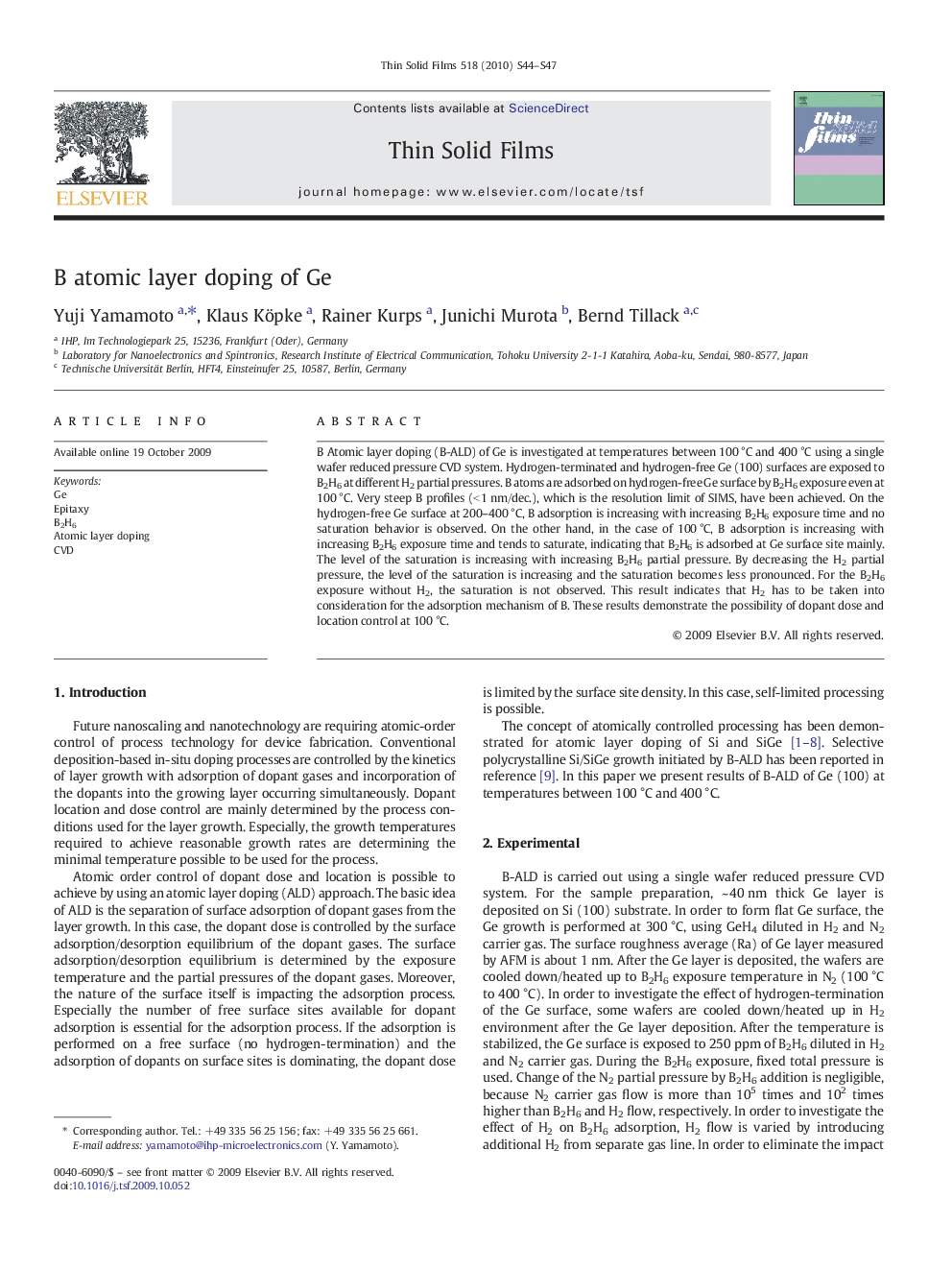| Article ID | Journal | Published Year | Pages | File Type |
|---|---|---|---|---|
| 1670214 | Thin Solid Films | 2010 | 4 Pages |
B Atomic layer doping (B-ALD) of Ge is investigated at temperatures between 100 °C and 400 °C using a single wafer reduced pressure CVD system. Hydrogen-terminated and hydrogen-free Ge (100) surfaces are exposed to B2H6 at different H2 partial pressures. B atoms are adsorbed on hydrogen-free Ge surface by B2H6 exposure even at 100 °C. Very steep B profiles (< 1 nm/dec.), which is the resolution limit of SIMS, have been achieved. On the hydrogen-free Ge surface at 200–400 °C, B adsorption is increasing with increasing B2H6 exposure time and no saturation behavior is observed. On the other hand, in the case of 100 °C, B adsorption is increasing with increasing B2H6 exposure time and tends to saturate, indicating that B2H6 is adsorbed at Ge surface site mainly. The level of the saturation is increasing with increasing B2H6 partial pressure. By decreasing the H2 partial pressure, the level of the saturation is increasing and the saturation becomes less pronounced. For the B2H6 exposure without H2, the saturation is not observed. This result indicates that H2 has to be taken into consideration for the adsorption mechanism of B. These results demonstrate the possibility of dopant dose and location control at 100 °C.
